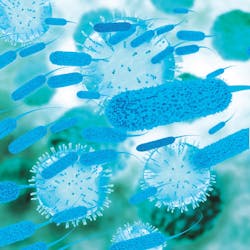About the author:
James Peterson is product manager for Crystal IS. Peterson can be reached at [email protected] or 518.271.7375.
Water infrastructure and design vary based on the needs of those using it. For instance, in a highly populated urban city such as New York City, the system has high treatment capacity and always is in use. It spans long distances to reach millions of access points. On the other hand, a more rural or remote town in the Midwest may have less total capacity and longer distances between plots of land, which requires a slower flowing system over great stretches.
While the conventional infrastructure of a larger city can leverage scale and consistency of flow for costs and predictability, this clockwork becomes less cost effective when replicated at a smaller scale. There also is higher risk for small systems, as nearly 25% of the systems have been in violation of microbiological standards at times in the U.S.
These small systems, serving less than 10,000 people, represent 97% of all systems in the U.S, according to the U.S. EPA. Smaller systems must be designed with low populations in mind to ensure water remains safe at the point of consumption, regardless of its path to the access point. Although there are several challenges facing small water systems, there also is an opportunity to address these challenges with new technology and disinfection techniques.
Small Systems Water Safety
A recent report from the U.S. Centers for Disease Control (CDC) found there were a total of 42 bacterials outbreaks reported across 19 states between 2013 and 2014. More than half of those outbreaks—57% to be exact—were due to Legionella, a bacteria that has been determined by the World Health Organization to be the most detrimental waterborne pathogen to human health in the developed world. The increase of bacterial contamination often is attributed to aging infrastructure, which allows microbes to more easily reproduce in cracked or outdated pipes long after water leaves a treatment center. This can contaminate the source of water in homes, offices and public areas.
The basic path of water to the consumer generally remains the same in either a large or small system. After water is gathered from a source, it is transported to a treatment center, and pushed through pipes to reach the tap. In the case of the small systems that are found in more rural areas, water can be left stagnant and undisrupted in pipes for longer periods of time because demand and usage is lower than a system in a metropolitan area that is constantly running to meet consumer demand. Adding to the risk, small system pipes can span multiple times the distance between treatment centers and taps, providing greater opportunity of microbial contamination along the way.
The struggle to expand upon existing infrastructure and ensure clean water within small systems recently has become more apparent as bacterial outbreaks continue to grow. Existing and new small water systems face this challenge, along with the challenge to justify adequate or full-time management for current needs. Systems that rapidly lose or gain rate payers also can face financial stresses, which makes expansion or maintenance of the treatment and distribution systems unfeasible.
With advances in technology, there is an opportunity for manufacturers to address these challenges at the point-of-use (POU). Water treatment for microbial hazards directly before consumption safeguards purification that may have been overlooked and jeopardized along the journey from source to tap. This opportunity can be a better investment for small scale systems, allowing for reduced central maintenance and prioritization of treatment by usage, instead of sizing microbial treatment systems for all water outlets.
Leveraging Water Disinfection
Less than 20% of water used in a home is dispensed from a tap for cooking or consumption. By properly deploying POU and distributed treatment methods, total treatment capacity of the system can be five times less than the entire small water system capacity while still providing safe drinking water to small system users.
Disinfection methods, such as mercury lamps, have been used in these cases, but typically require annual overhead costs of lamp replacements no matter the amount of safe water dispensed. UVC LED purification systems now are positioned to better align costs to consumption by automatically turning on and off when in use. This increases longevity and reduces maintenance demands.
In addition, the cost to disinfect water is directly correlated to the amount of water used, giving the UVC LEDs a longer lifetime of use and ultimately cutting overhead costs for consumers to pay for water they use. Incorporating these technologies reduces the risk of post-treatment contamination and enables purification in more remote areas that are at higher risk while sustaining a manageable cost.
Ensuring consumers are protected from bacterial outbreaks—whether they reside in a big city or a remote town—is essential for public health. While infrastructure design and layout may differ across large and small systems, solutions exist to address the challenges at the tap, regardless of water usage and flow rates. Therefore, there is an opportunity for water original equipment manufacturers and utilities to collaborate on effective distributed and POU treatment methods to drastically improve safety in small or at-risk systems.

